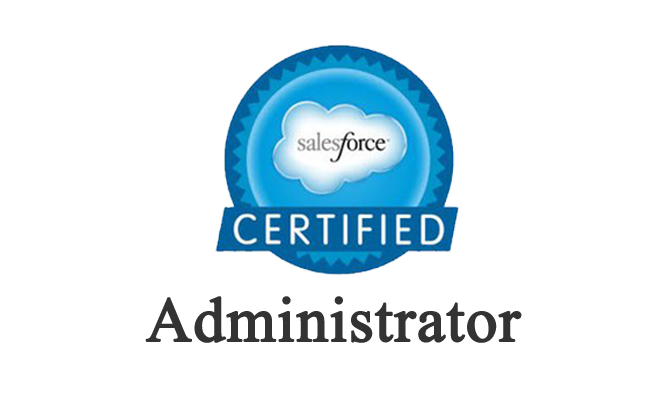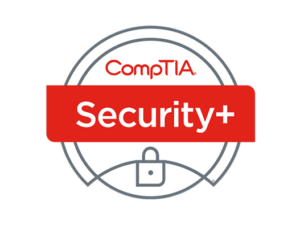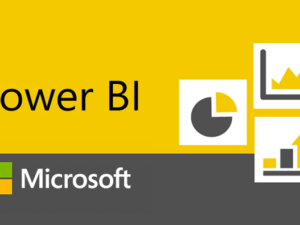This Salesforce Admin certification training is designed to ensure that you learn & master the concepts of Salesforce Administrator and pass the certification exam on your first try. You will learn how to administer and configure Sales and Service Clouds, understand the sales and marketing ecosystem, and manage a wide range of important features and functionality of Salesforce. This practical hands-on training will help establish your credentials in the Salesforce domain and give a solid boost to your career. Certified Salesforce professionals earn from 1.2 to 1.8 times more than their non-certified counterparts.
Salesforce Administrator
- Description
- Curriculum
- FAQ
- Reviews

- Configure and manage Sales and Service Clouds
- Gain insights into the roles of each of the functional user groups (inside sales, outside sales, marketing, customer support and management)
- Implement automation, security, debugging, data validation, and customize apps
- Configure the user interface
- Acquire the full skillsets needed to pass the Salesforce Administrator Certification exam on your first attempt.
- Individuals looking to build a career in Salesforce
- System administrators
- Sales operations professionals
- IT managers
- Product managers
Certs Learning’s Salesforce Administrator certification training offers the opportunity for participants to work on practical industry-based projects that span unique business scenarios.
Project 1: Implementing an End-to-end Recruitment Process
Project Scenario:
A US-based placement company wants to use Salesforce for implementing an end-to-end recruitment process. A team is formed to track the jobs posted by recruiters as well as candidate responses. The team wants to track the information on the candidates, capturing their experience details and work preferences. The team also wants to incorporate various business rules in an automated process that will make it a highly effective system.
Project 2: Implementing Customer Service Process Management
Project Scenario:
A UK-based mobile company needs an application to help boost the service provided for its millions of customers. The company wants to track customers who have reported problems with their mobile phones and the types of issues experienced. Based on these findings, the company wants to speed up the process to give its customers quicker solutions.
-
1Lesson 01 - Salesforce Overview
- 1.1 Introduction to Salesforce
- 1.2 Salesforce Overview
- 1.3 Introduction to Salesforce
- 1.4 Salesforce Editions
- 1.5 Home Page Customization
- 1.6 User Management
- 1.7 Creating and Customizing Tabs
- 1.8 Creating an App
- 1.9 Uploading a Company Logo
- 1.10 Company Information Page
- 1.11 System Overview Page
- 1.12 Updating the Fiscal Year
- 1.13 Quiz
- 1.14 Case Study
- 1.15 Case Study Demo
- 1.16 Key Takeaways
- 1.17 Conclusion
-
2Lesson 02 - Sales Cloud
- 2.1 Introduction to Sales Cloud
- 2.2 Sales Cloud
- 2.3 Leads Home Page
- 2.4 Creating List Views
- 2.5 Creating and Converting Leads
- 2.6 Creating Accounts
- 2.7 Creating Contacts
- 2.8 Creating Email Templates
- 2.9 Sending Individual Emails
- 2.10 Sending Mass Emails
- 2.11 Creating and Managing Price Books
- 2.12 Creating Products
- 2.13 Creating Opportunities
- 2.14 Creating Activities
- 2.15 Creating a Web-to-Lead Form
- 2.16 Creating a Lead Assignment Rule
- 2.17 Creating a Lead Queue
- 2.18 Creating an Auto-Response Rule
- 2.19 Creating Campaigns
- 2.20 Record Types
- 2.21 Quiz
- 2.22 Case Study 1
- 2.23 Case Study Demo 1
- 2.24 Case Study 2
- 2.25 Case Study Demo 2
- 2.26 Key Takeaways
- 2.27 Conclusion
-
3Lesson 03 - Quote Templates
- 3.1 Introduction to Quote Templates
- 3.2 Quote Templates
- 3.3 Creating a Quote Record
- 3.4 Creating a Quote Template
- 3.5 Generating a Quote PDF
- 3.6 Emailing a Quote PDF
- 3.7 Modifying Quote Templates
- 3.8 Quiz
- 3.9 Case Study
- 3.10 Case Study Demo
- 3.11 Key Takeaways
- 3.12 Conclusion
-
4Lesson 04 - Service Cloud
- 4.1 Introduction to Service Cloud
- 4.2 Service Cloud
- 4.3 Creating Cases
- 4.4 Creating Case Assignment Rules
- 4.5 Creating Case Escalation Rules
- 4.6 Enabling Solutions
- 4.7 Creating Solutions
- 4.8 Attaching Solutions to Cases
- 4.9 Enabling Knowledge
- 4.10 Configuring Knowledge
- 4.11 Creating a Web-to-Case Form
- 4.12 Creating an Email-to-Case Address
- 4.13 Quiz
- 4.14 Case Study 1
- 4.15 Case Study 1 Demo
- 4.16 Case Study 2
- 4.17 Case Study 2 Demo
- 4.18 Key Takeaways
- 4.19 Conclusion
-
5Lesson 05 - AppExchange
- 5.1 Introduction to AppExchange
- 5.2 AppExchange
- 5.3 AppExchange Overview
- 5.4 Finding and Selecting an App
- 5.5 Finding a Developer
- 5.6 Finding a Consultant
- 5.7 Quiz
- 5.8 Case Study
- 5.9 Case Study Demo
- 5.10 Key Takeaways
- 5.11 Conclusion
-
6Lesson 06 - Reports
- 6.1 Introduction to Reports
- 6.2 Reports
- 6.3 Understanding Report Formats
- 6.4 Creating a Leads Report
- 6.5 Creating Contacts and Accounts Report
- 6.6 Creating an Opportunity Report
- 6.7 Adding Leads to a Campaign from a Report
- 6.8 Creating a Report Chart
- 6.9 Scheduling Reports
- 6.10 Creating a Campaign Report
- 6.11 Summarizing Report Data
- 6.12 Creating a Report Formula
- 6.13 Exporting Reports to Excel
- 6.14 Quiz
- 6.15 Case Study 1
- 6.16 Case Study 1 Demo
- 6.17 Case Study 2
- 6.18 Case Study 2 Demo
- 6.19 Key Takeaways
- 6.20 Conclusion
-
7Lesson 07 - Dashboards
- 7.1 Introduction to Dashboards
- 7.2 Dashboards
- 7.3 Understanding Dashboard Components
- 7.4 Creating a Dashboard
- 7.5 Refreshing a Dashboard
- 7.6 Modifying Columns on Dashboards
- 7.7 Adding Filter to Dashboard
- 7.8 Managing Access to Reports
- 7.9 Adding a Report as a Dashboard Component
- 7.10 Setting Up Dynamic Dashboards
- 7.11 Enabling Dashboards for iPad
- 7.12 Modifying Report and Dashboard Interfaces
- 7.13 Activating the Report Builder on Profiles
- 7.14 Quiz
- 7.15 Case Study
- 7.16 Case Study Demo
- 7.17 Key Takeaways
- 7.18 Conclusion
-
8Lesson 08 - Chatter and Salesforce to Salesforce Configuration
- 8.1 Introduction to Chatter
- 8.2 Chatter
- 8.3 Chatter Overview
- 8.4 Enabling Chatter
- 8.5 Enabling Chatter Feeds on Records
- 8.6 Configuring Chatter Groups
- 8.7 Creating Customer Groups
- 8.8 Creating a Free Customer Chatter User
- 8.9 Customizing Chatter Email Notifications
- 8.10 Configuring Salesforce to Salesforce
- 8.11 Accepting a Salesforce Connection
- 8.12 Sharing an Account via Salesforce to Salesforce
- 8.13 Enabling Ideas
- 8.14 Configuring Ideas Themes
- 8.15 Enabling Social Accounts
- 8.16 Enabling Libraries and Content
- 8.17 Customizing Libraries and Content
- 8.18 Uploading Documents to Libraries and Content
- 8.19 Configuring Salesforce1
- 8.20 Quiz
- 8.21 Case Study
- 8.22 Case Study Demo
- 8.23 Key Takeaways
- 8.24 Conclusion
-
9Lesson 09 - Role Hierarchy
- 9.1 Introduction to Role Hierarchy
- 9.2 Role Hierarchy
- 9.3 Viewing Role Hierarchy
- 9.4 Creating Roles
- 9.5 Enabling Field History
- 9.6 Creating Groups
- 9.7 Creating Permission Sets
- 9.8 Assigning Roles to Users
- 9.9 Quiz
- 9.10 Case Study
- 9.11 Case Study Demo
- 9.12 Key Takeaways
- 9.13 Conclusion
-
10Lesson 10 - Security Controls
- 10.1 Introduction to Security Control
- 10.2 Security Control
- 10.3 Viewing Object Security
- 10.4 Changing Default Record Access
- 10.5 Sharing Settings
- 10.6 Field Accessibility
- 10.7 Password Policies
- 10.8 Session Settings
- 10.9 Login Flows
- 10.10 Network Access
- 10.11 Activations
- 10.12 Session Management
- 10.13 Login Access Policies
- 10.14 Certificate and Key Management
- 10.15 Viewing Setup Audit Trail
- 10.16 Executing Expire All Passwords
- 10.17 Delegated Administration
- 10.18 Remote Site Settings
- 10.19 Named Credentials
- 10.20 File Upload and Download Security
- 10.21 Quiz
- 10.22 Case Study
- 10.23 Case Study Demo
- 10.24 Key Takeaways
- 10.25 Conclusion
-
11Lesson 11 - Profiles
- 11.1 Introduction to Profiles
- 11.2 Profiles
- 11.3 Standard Profiles Overview
- 11.4 Assigning Page Layouts
- 11.5 Field-Level Security
- 11.6 Custom App Settings and Access
- 11.7 Tab Settings
- 11.8 Record Type Settings
- 11.9 Administrative Permissions
- 11.10 General User Permissions
- 11.11 Standard Object Permissions
- 11.12 Custom Object Permissions01:11
- 11.13 Password Policies and Session Timeout
- 11.14 Login Hours and IP Ranges
- 11.15 Enabling Apex and Visualforce Access
- 11.16 Quiz
- 11.17 Case Study
- 11.18 Case Study Demo
- 11.19 Key Takeaways
- 11.20 Conclusion
-
12Lesson 12 - Data Management
- 12.1 Introduction to Data Management
- 12.2 Data Management
- 12.3 Importing Leads
- 12.4 Importing Contacts and Accounts
- 12.5 Using Mass Delete
- 12.6 Installing Data Loader
- 12.7 Importing Records with Data Loader
- 12.8 Updating Records with Data Loader
- 12.9 Deleting Records with Data Loader
- 12.10 Exporting Records with Data Loader
- 12.11 Adding a Field in the Schema Builder
- 12.12 Scheduling a Data Export
- 12.13 Creating and Using Sandbox
- 12.14 Mass Transferring Records
- 12.15 Reporting Snapshots
- 12.16 Working with Tags
- 12.17 Quiz
- 12.18 Case Study
- 12.19 Case Study Demo
- 12.20 Key Takeaways
- 12.21 Conclusion
-
13Lesson 13 - Workflow Rules
- 13.1 Introduction to Workflow Rules
- 13.2 Workflow Rules
- 13.3 Creating a Workflow Rule
- 13.4 Creating a Workflow Rule Field Update
- 13.5 Creating a Workflow Rule Task Assignment
- 13.6 Creating a Workflow Rule Email Alert
- 13.7 Quiz
- 13.8 Case Study 1
- 13.9 Case Study Demo 1
- 13.10 Case Study 2
- 13.11 Case Study Demo 2
- 13.12 Key Takeaways
- 13.13 Conclusion
-
14Lesson 14 - Change Set and Deployment
- 14.1 Introduction to Change Sets and Deployment
- 14.2 Change Sets and Deployment
- 14.3 Outbound Change Sets
- 14.4 Inbound Change Sets
- 14.5 Deployment Settings
- 14.6 Deployment Status
- 14.7 Eclipse IDE
- 14.8 Quiz
- 14.9 Case Study
- 14.10 Case Study Demo
- 14.11 Key Takeaways
- 14.12 Conclusion
-
15Lesson 15 - Communities
- 15.1 Introduction to Communities
- 15.2 Communities
- 15.3 Creating a New Community
- 15.4 Topic Management
- 15.5 Recommendations Management
- 15.6 Reputation Management
- 15.7 Adding Members
- 15.8 Managing Tabs and Branding
- 15.9 Login and Registration
- 15.10 Community Preferences
- 15.11 Quiz
- 15.12 Case Study
- 15.13 Case Study Demo
- 15.14 Key Takeaways
- 15.15 Conclusion
-
16Lesson 16 - Help and Training
- 16.1 Introduction to Help and Training
- 16.2 Help and Training
- 16.3 Using Answers
- 16.4 Using Ideas
- 16.5 Searching for a Help Topic
- 16.6 Contacting Support
- 16.7 Trust Site
- 16.8 Known Issues
- 16.9 Quiz
- 16.10 Case Study
- 16.11 Case Study Demo
- 16.12 Key Takeaways
- 16.13 Conclusion
Visa Credit or Debit Card
MasterCard
American Express
Diner’s Club
PayPal
Once payment is received you will automatically receive a payment receipt and access information via email.







